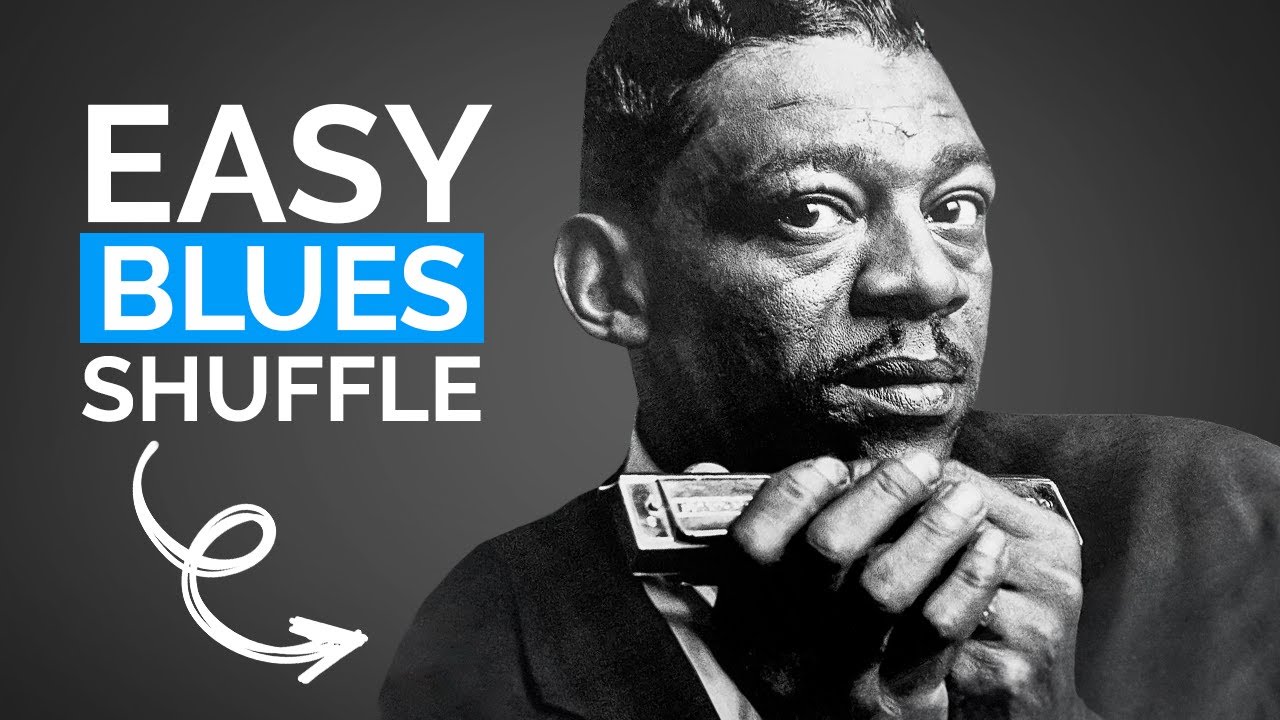Sounds exclusive to the Tongue block embouchure
There are certain sounds one can only get when using the Pucker Embouchure as well as a totally different set of sounds one can produce when using the Tongue Block Method. There are clear advantages for both, but for the Chicago Style of playing Blues harmonica, the T block is the clearly superior choice.
T Blocking occurs when we place the tip of our tongue on to the left side of the harmonica, while letting a small hole remain open on the right side. This allows us to get a clean single note out of the right side of the mouth. The tongue should be maintaining contact with the harmonica most of the time as a set default. We should aim to have only three or four holes of the harmonica in our mouth and our tongue should always cover the holes furthest to the left. Example block hole 1, and 2 to get hole 3 open on the right. (We will always cover the hole to the left except when playing hole 1. This is the T switch that we will discuss later.)
We can lift the tongue rhythmically or non rhythmically- to get our first sound exclusive to the T Block Method. We call this technique Vamping and is also referred sometimes as Slapping. There are two distinct types of Vamping.
“Vamping/Tongue Slapping”
- Chicago Style Blues Vamping/Rapid Vamping- explosive, loud, punchy and crunchy sound found in classic Chicago Blues recordings.
- Folk Style Rhythmic Vamping - a much more subdued and nuanced sound that can create the illusion of two separate instruments playing at once. Gentle, soft, controlled and rhythmically precise. It is found much more in Old Timey and Country Blues.
“Ghost Chording/Soft Shuffle”
Using the tongue to create a Full Block (holes 1,2,and 3) and quickly lifting the tongue and then returning it back down into the full block. A quintessential sound in Chicago Blues Harmonica. A rhythmic “Chordal Effect” that can be used for fills as well as accompaniment playing. (Usually played in a two breaths in and two breaths out pattern.)
“Tongue Shakes”
Moving the tongue side to side quickly to get a warbling sound akin to the head shake, but much more nuanced and slippery.
“Octaves/Splits”
The act of putting the tip of the tongue in the middle of the harp and playing with an open hole on either side of the tip of the tongue. This allows to actually double the sound of the harmonica and also play “True Octaves.” A much bigger sound than single notes and quite powerful when used on the high end.
“Dirty Notes/Double Stops, Dirty Splits, Dirty Shakes”
One can definitely get more than one hole open in the mouth at one time when Puckering, but being able to “Dial In” the amount of desired dirt is much more effectively controlled when using the Tongue. Dirt creates a “Difference Tone” and also adds another layer of sound that can build blues horsepower and overall sound. We can play Shakes and Splits both Clean or Dirty. It’s a choice. A Clean sound is usually a more”pretty” sound and adding dirt adds grit and intensity (blues horsepower).
“Pull Slaps” or “Super Vamps”
The most explosive type of Vamp that adds the absolute most “Crunch” to single notes. This is a Rice Miller technique that is not easy to pull off at first and might take some time to truly master. The technique involves creating suction with a “Full Block,” (blocking all the holes on the harmonica) and releasing the tongue while at the same time timing the breath very carefully.
“Tongue Switching”
TS is the act of taking the tip of the tongue and moving it to the other side of the mouth or “switching” the open hole to the other side. In Blues playing we usually only use the T Switch for hole 1, but there are players such as Sugar Blue who would famously and expertly switch up and down the entire harp. Very wicked fast playing is possible using this method. James Conway plays incredibly fast Irish Fiddle Tunes on the Diatonic using this method. He learned it from Sugar himself working the door at Rosa’s Lounge for many years.
In conclusion, I hope I showed you some of the cool stuff you can do using your tongue to play the harp. These sounds CAN NOT be made unless using the tongue! There is no short cut. Just start slow. I recommend using a Tongue Block Trainer and a Mirror to check your embouchure. You can find them for purchase on Filiskostore.com .
TB can be used on any type of harmonica. Diatonic, Chromatic, Tremolo, Base Harps, and Chord Harps all benefit from players using their tongue. All the greatest classic Chicago blues players (with the exception of perhaps only Butterfield) used T blocking. It can clearly be heard in their recordings if you know what to listen for. This really is not up for debate as most of the informed and experienced experts all agree.
So “Get Your Tongue In The Game! “ (Dennis Gruenling)……and remember
“When in Doubt Inhale! …The Blow Notes Are Not What They Seem.” (Joe Filisko) You won’t regret it. I promise.


